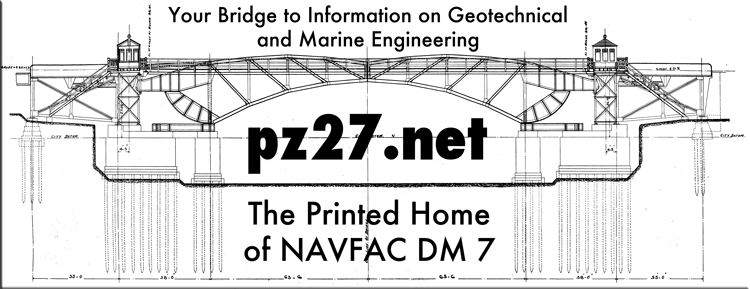Foundations in Expansive Soils
UFC 3-220-07
16 January 2004
Supercedes: TM 5-818-7 September 1983 (still available)
This manual presents guidance and information for the geotechnical investigation necessary for the selection and design of foundations for heavy and light military-type buildings constructed in expansive clay soil areas. The information in this manual is generally applicable to many types of structures such as residences, warehouses, and multi-storey buildings. Emphasis is given to the maintenance of an environment that encourages constant moisture conditions in the foundation soils during and following construction. Special attention must always be given to specific requirements of the structure such as limitations on allowable differential movement.
Overview for Design of Foundations on Expansive Soils
Lawrence D. Johnson
U.S. Army Corps of Engineers, Waterways Experiment Station
Miscellaneous Paper GL-79-21
September 1979
Numerous structures constructed on expansive clay soil have experienced and sustained significant damage from differential heave and settlement. The types of structures most often damaged from heaving soil include highways, foundations and walls of residential and light commercial buildings, canal and reservoir linings, and retaining walls. The leading cause of foundation heave or settlement is change in soil moisture attributed to change in the field environment (e.g., climatic changes, prevention of evaporation “beneath covered areas, improper drainage folio-wing construction and from usage requirements of the structure.
The design process for structures on expansive clay should consist of a feasibility study, preliminary design phase to establish the overall concept, and a detailed design phase to complete the engineering description of the project. This report provides background information for establishing the preliminary design of structures in swelling soil areas based on field studies conducted by the U. S. Army Engineer Waterways Experiment Station (WES) and experiences of numerous investigators.
The overview includes analyses of site and soil investigations, topography and landscaping including drainage and soil stabilization techniques, and selection of the foundation and superstructure. General suggestions for remedial repair of existing structures are also provided. Analyses of the movement of cast-in-place concrete piers in
swelling soil are included to provide a basis for design of these foundations.
Appendix A presents a determination of soil suction by thermocouple psychrometers. Suggestions- for repair of structures (remedial measures) are presented in Appendix B. Prediction of pier movement is discussed in Appendix C. Appendix D is a notation of symbols used in the report.
Van der Merwe’s Method, Adapted for SI Units
A brief overview of this important method, which has been directly adapted for SI units. Should clear up confusion on many textbooks (and some of the documents listed above) on this subject.

